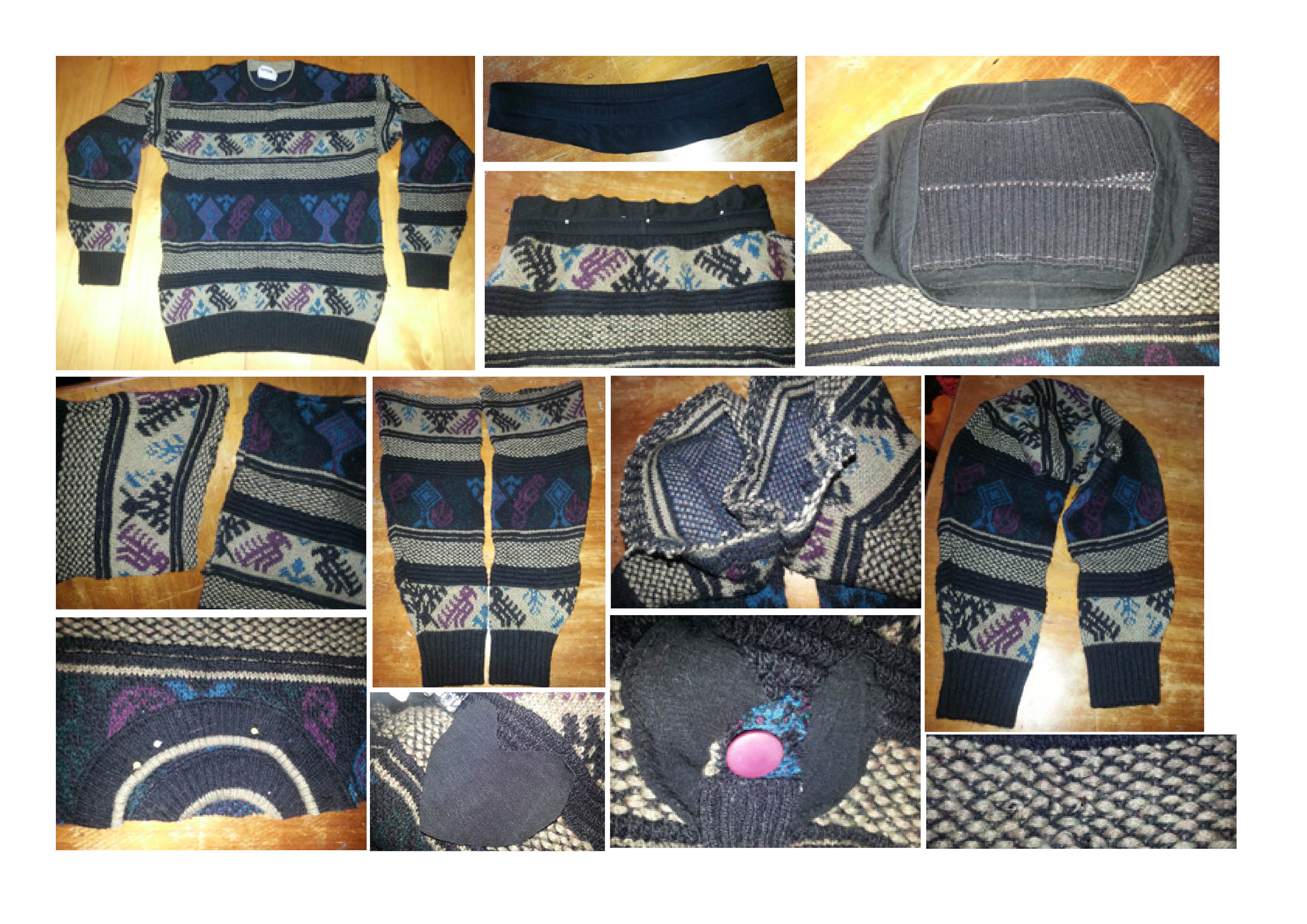 Tradition and convention tend to keep us locked into established patterns – be that of behaviour, processes and possessions. A jumper is a jumper – until you turn it on its head.
Tradition and convention tend to keep us locked into established patterns – be that of behaviour, processes and possessions. A jumper is a jumper – until you turn it on its head.
Transforming old reject jumpers/sweaters into skirts is one of my favorite and easiest upcycles – and it’s the focus of an upcoming workshop on July 25 at the Jumpers and Jazz Festival in Warwick. If you’d like to join us, at the Abbey of the Roses activity, you can book here.
I love wearing long wool skirts with tights for winter warmth so I’ll be making more in coming days to demonstrate creative ways to reuse old wool jumpers with holes in them.
This upcycled skirt is an opshop-found big men’s wool jumper turned upside down. The waistband remains the waistband, just the other way up. To secure the new ‘waistband’ sufficient to hold up the skirt, I sewed on what had been the waistband of worn-out black wool tights trimmed to about 4cm deep, so the circumference already fitted my waist. That was so easy, but other options might be threading through hat elastic, sewing bias tape on the inside and threading through elastic, or creating a waistband out of stretch lycra or wool. The slimmer you can make it, the less bulky it will be around your middle, so I wouldn’t recommend just turning the band over when working with a thick wool jumper.
You cut off the sleeves where they join the body of the jumper, then cut the jumper along the shoulders. Turn inside out and sew the side-seams together, where the sleeves used to be. I used some of the shoulder trim to fill in the space where the curved front neckline was, then neatened the hem by zigzagging twice to hold the knitting where it had been cut. To make the scarf, you just sew the sleeves together. You can do this in two ways – feed one right-side-out into the other wrong-side-out, sewing around the circle, then pulling right side out. Or you can sit them right sides together side by side, and sew around the circle as far as you can, then finishing off the gap by hand. (I did the latter, but think the first way is easier in hindsight). I patched one holed with an offcut and button, and darned others. 